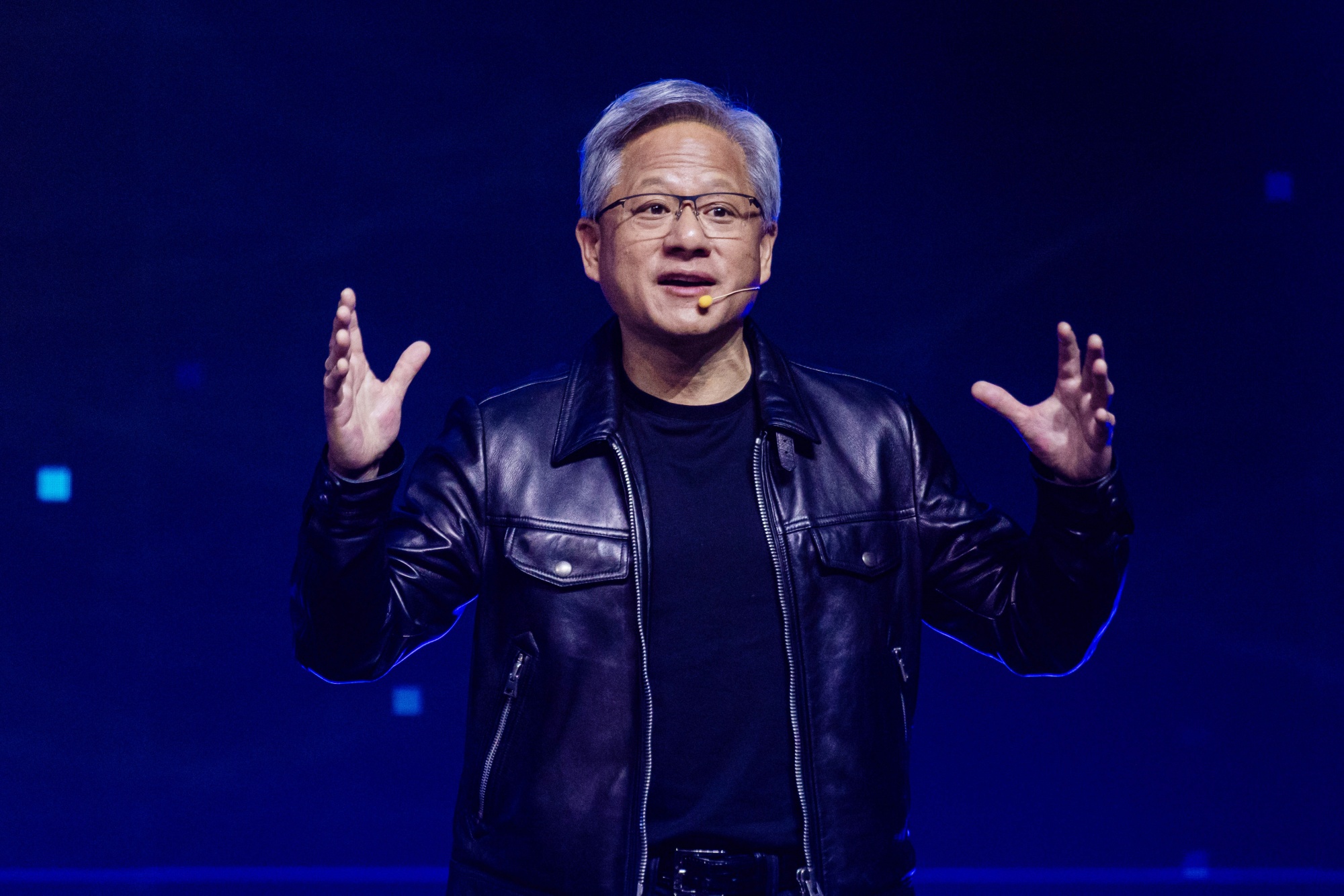Markets are enamoured with artificial intelligence and its implications.
A confluence of factors led to AI going from a fringe investment idea into the mainstream in record time – ChatGPT, for instance, reached 1 million users in just five days.
However, AI is a broad investment theme with many different opportunities.
At the broadest level, we think the investment opportunities of AI are in chips – used to power the process; storage – needed to house the enormous amounts of data processed; energy – used to power the infrastructure; and software – used to execute computer processes.
 Nvidia’s CEO Jensen Huang. Picture: Bloomberg
Nvidia’s CEO Jensen Huang. Picture: Bloomberg
While investors initially focused on the chipmakers (Nvidia in particular), we think storage, energy and software are equally important sectors that have tectonic-sized tailwinds.
Demand for Nvidia generative AI chips are projected to double again in the next six years, and this will add to further demand for the data storage (and data centres) which is already growing at double-digit rates, underpinned by increased device usage and the digitisation of the global economy.
We expect to see more than 30 gigawatts (GW) of data centre capacity requirement through to 2030, or over 15 per cent a year.
Australia, which is already a top five global data centre hub, is forecast to grow from 1GW today to more than 2.5GW during this time.
We strongly disagree with the notion that the performance and weight of AI-related tech stocks is a signal that we are in a bubble.
Rapid growth data centres ultimately will drive strong demand for energy usage. Demand for power in the OECD has been reasonably flat for the past few decades. This explosive growth in data centres will likely drive meaningful growth for energy demand which utility sectors are unprepared for.
Subpar investment in utility assets and long lead times for renewables, means we are likely to see sustained higher energy prices. Major utility businesses such as Origin Energy are well positioned to lead the market in investment in renewables and are beneficiaries of higher energy prices.
None of these sub investment themes are any more or less important than the next. They are all part of a vertical value chain necessary for AI to grow and flourish.
But for Australian investors who wish to play this theme on the ASX, storage is probably the easiest and most relevant given we don’t manufacture chips, energy tends to be localised and software developers and creators tend to be global.
Before looking at where to invest in this space it is important to understand the investment merits for this AI sub theme. Data centres are a direct derivative of the need to process and store large qualities of data with proximity and securely.
Key components of a successful data centre include access to the grid, security of energy, connectivity and proximity to clients. With limited access to usable land that provides such access and long-term contracts for energy security, it is the incumbent data centre players that will continue to drive future growth.
The best listed players that we believe directly participate in this megatrend here in Australia are NEXTDC and Goodman Group – both have a strong pipeline of future contracted development.
In the case of Goodman Group, not only does it directly tap into the global data centre trend, it also has the opportunity to change much of its future data centre pipeline into a direct operating model where returns can be multiple folds of current development earnings.
We acknowledge there are concerns that AI-related stocks are overhyped and overpriced. Some market commentators have even suggested that the magnificent seven are pushing US equities into bubble-like territory given they now make up around 30 per cent of the total market capitalisation of the S&P 500 Index.
It’s hard to know short term whether the theme is overhyped, but we strongly disagree with the notion that the performance and weight of AI- related tech stocks is a signal that we are in a bubble.
We believe AI will be a mega investment trend that permeates every part of human life via business and household adoption and so over coming months, quarters and years, we think investors should be looking to add exposures to their portfolios.
Jun Bei Liu is a lead portfolio manager at Tribeca Investment Partners.
This article was originally posted by The Australian Financial Review here.
Licensed by Copyright Agency. You must not copy this work without permission.
Disclaimer: This material has been prepared by the Australian Financial Review, published on 19 May 2024. HM1 is not responsible for the content of linked websites or content prepared by third party. The inclusion of these links and third-party content does not in any way imply any form of endorsement by HM1 of the products or services provided by persons or organisations who are responsible for the linked websites and third-party content. This information is for general information only and does not consider the objectives, financial situation or needs of any person. Before making an investment decision, you should read the relevant disclosure document (if appropriate) and seek professional advice to determine whether the investment and information is suitable for you.